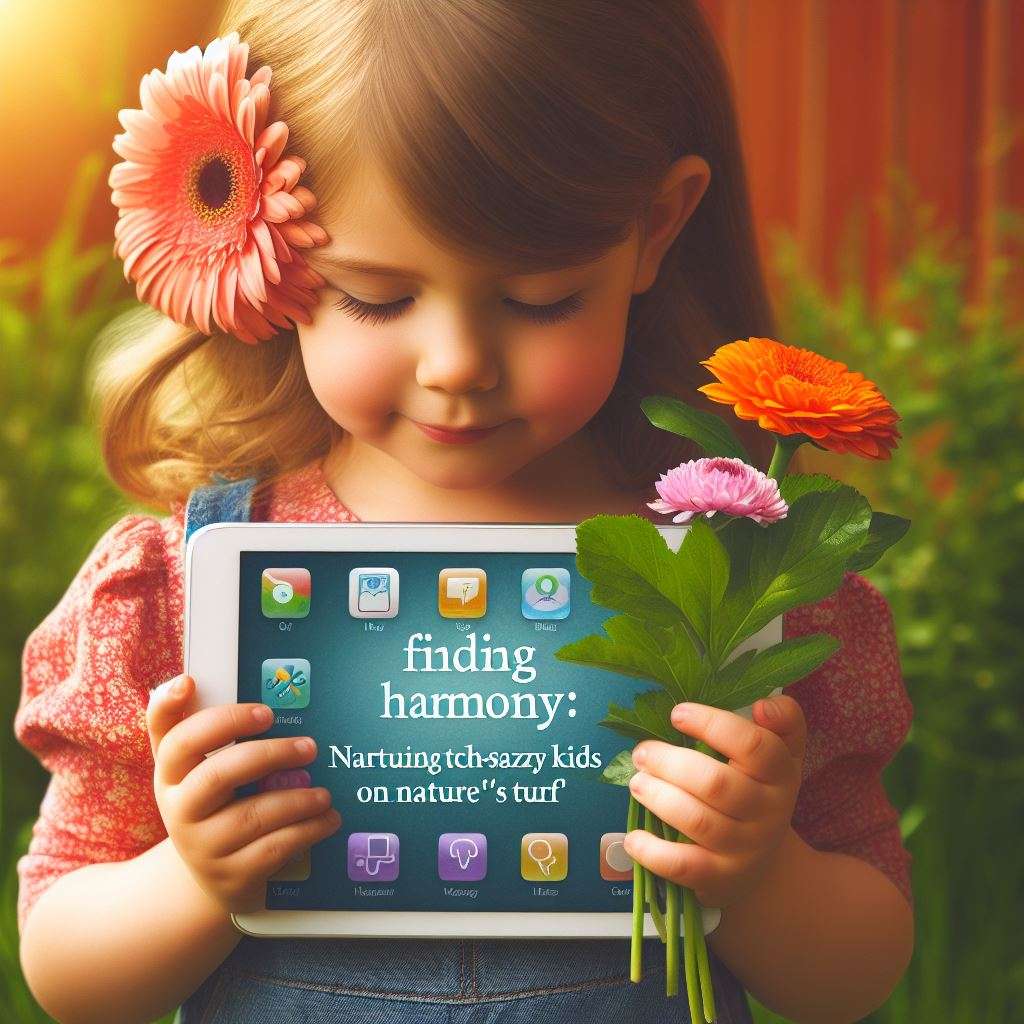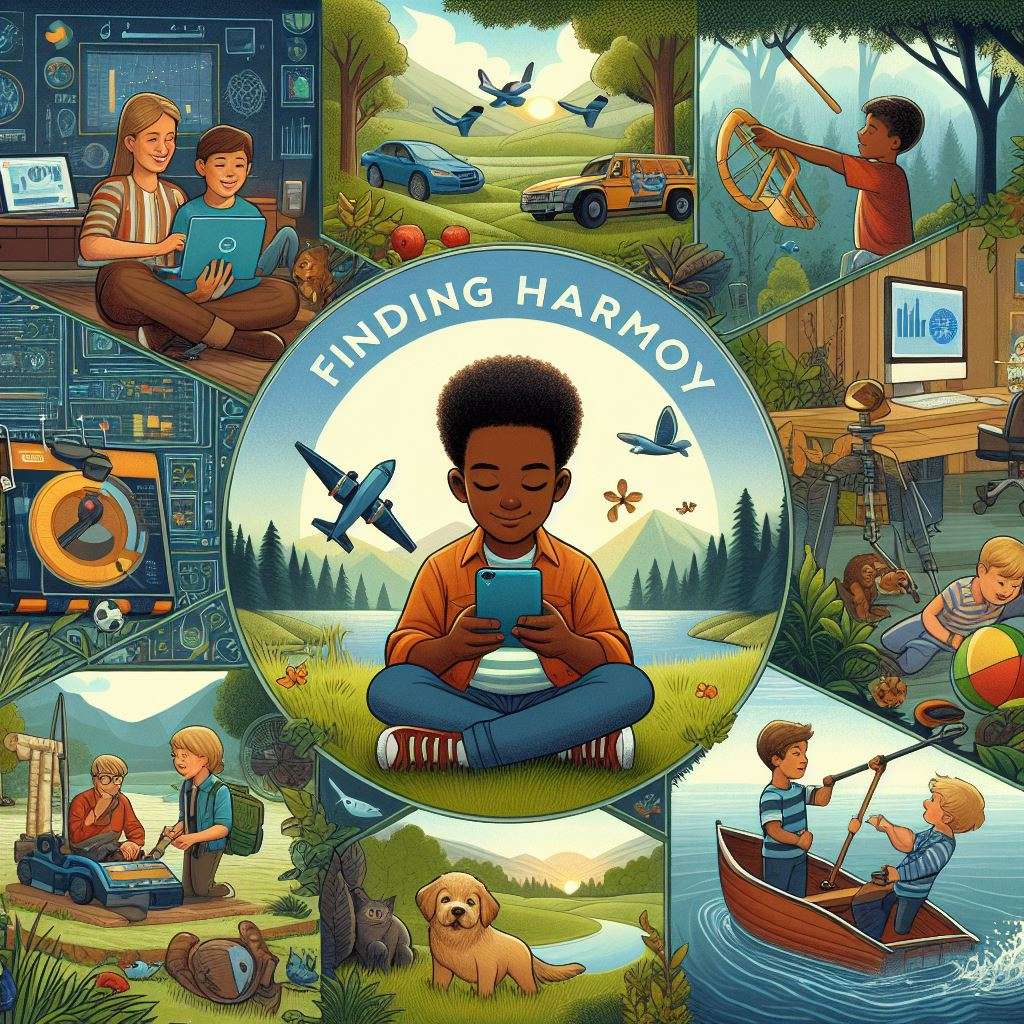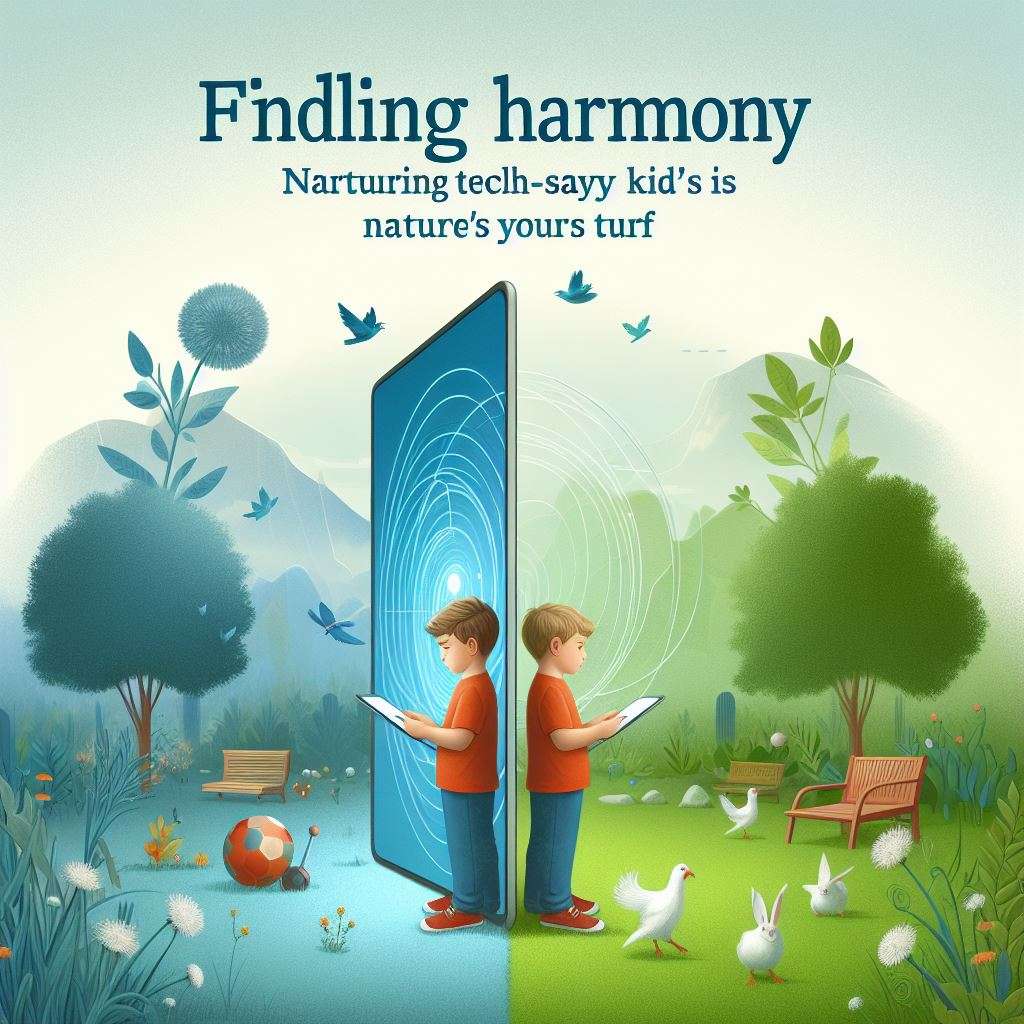The Dilemma:
As the digital revolution sweeps across the globe, a new dilemma emerges for parents and educators: how to balance the benefits of technology with the joys of nature for children’s well-being. The contrast is stark—a tranquil scene of verdant lawns interrupted by the flickering of screens, each vying for the attention of the young generation. This balance is crucial for children’s physical, mental, and emotional development. While technology offers incredible opportunities for learning and growth, it also has the potential to isolate children from the natural world, leading to a host of health and behavioral issues. Finding a way to integrate the two harmoniously is the challenge that parents and educators must confront.
The Implications:
This dilemma has profound implications for the future of childhood. Are we witnessing the demise of the idyllic image of children frolicking in the grass, replaced by a sterile reality of children glued to their devices? Are we depriving them of the essential experiences of touch, smell, and sound that nature offers, enriching their senses and their souls? The increasing prevalence of technology in children’s lives raises important questions about the impact on their physical, emotional, and cognitive development. As we grapple with these questions, it is crucial to consider how we can strike a balance between the benefits of technological advancement and the importance of preserving the natural world as a source of wonder and enrichment for the next generation.

The Advantages:
The advantages of technology are undeniable. Screens provide a rich and diverse platform for learning and entertainment, from interactive educational apps to immersive virtual realities. Technology also enables children to connect with others across distances and cultures, fostering a sense of global citizenship and empathy. Additionally, technology has revolutionized the way we access information, allowing for instant communication and access to a wealth of knowledge at our fingertips. It has also opened up new opportunities for creativity and innovation, empowering children to explore their interests and develop new skills in a digital world.
The Drawbacks:
However, technology also has its drawbacks. Excessive screen time can lead to sedentary lifestyles, reduced attention spans, and a loss of connection with the natural world. These consequences can negatively impact children’s physical, mental, and emotional health, as well as their cognitive and social development. To mitigate these issues, parents and educators must encourage a balanced approach to technology use. Setting limits on screen time, promoting outdoor activities, and fostering real-world social interactions can help offset the potential harms of excessive-tech consumption. Additionally, incorporating educational and interactive content into digital experiences can provide a more enriching and beneficial relationship with technology for children. By being mindful of the impact of technology and actively seeking a healthy balance, we can ensure that children’s overall well-being and development are supported in this digital age.
The Solution:
But there is a solution—a middle ground where technology and nature can coexist harmoniously. It’s about finding the optimal balance, allowing children to enjoy the sensory delights of the outdoors while using technology to enhance, not replace, their experiences. This can be achieved by incorporating technology into outdoor activities, such as using a mobile app to identify different plants and animals or using a GPS device to navigate a hiking trail. It’s also important for parents and educators to set limits on screen time and encourage children to engage in physical activity and outdoor play. By striking a balance between technology and nature, we can ensure that children have the best of both worlds and develop a deep appreciation for the natural world while also gaining valuable skills in technology.
The Strategy:
Finding the optimal balance does not require abandoning screens altogether. Rather, it involves integrating the two domains creatively. Imagine this: augmented reality nature trails that combine the real and the virtual, stimulating children’s curiosity and wonder about the environment. Or digital platforms that encourage children to document and share their outdoor adventures, cultivating a deep appreciation and respect for nature.In this way, technology can be harnessed as a tool for enhancing outdoor experiences rather than replacing them. By striking a harmonious balance between the digital and the natural world, we can foster a generation of individuals who are not only technologically savvy but also deeply connected to the world around them.
The Debate:
The debate around this issue is lively and complex. Some praise the wonders of technology, highlighting its potential to facilitate learning and communication. Others emphasize the value of nature, pointing to its role in fostering creativity, resilience, and well-being. But can these views converge, creating a space where children can benefit from both spheres?As technology continues to advance at a rapid pace, it is becoming increasingly important to find ways to balance its use with the benefits of spending time in nature. Some argue that children need to be exposed to both in order to develop a well-rounded set of skills and experiences. For example, while technology can provide access to a wealth of information and educational resources, spending time in nature can help children to develop a sense of wonder and curiosity about the world around them. Additionally, studies have shown that spending time in nature can have a positive impact on mental health and well-being, which is especially important for children who may be struggling with anxiety or stress. Ultimately, finding a way to integrate technology and nature in a way that is beneficial for children will require ongoing discussion and experimentation. However, by working together, parents, educators, and other stakeholders can help to create a world where children can thrive both in the digital realm and in the great outdoors.
The Child’s Perspective:
At the center of this debate is the child—innocent yet sophisticated, torn between the attraction of a captivating screen and the charm of nature’s marvels. Their hopes resonate in the desire for both the thrill of gaming and the adventure of outdoor exploration. Their fears stem from missing out on the opportunities that only nature can offer.
The Harmony:
Research supports the importance of both technology and nature for children’s development. Experts recommend moderation, stressing the need to set limits and promote a healthy balance between screen time and outdoor activities. The key lies in empowering children to make informed choices, and guiding them to navigate these domains responsibly.

The Conclusion:
So, can technology and nature coexist? Absolutely. It’s about harnessing the power of both realms to nurture well-rounded individuals. Let’s celebrate outdoor play without vilifying technology and vice versa. Let’s empower our children to cherish the wonders of a grass-stained childhood while embracing the digital era responsibly. After all, in the harmony of technology and nature lies the promise of a future where our children flourish both indoors and outdoors.
